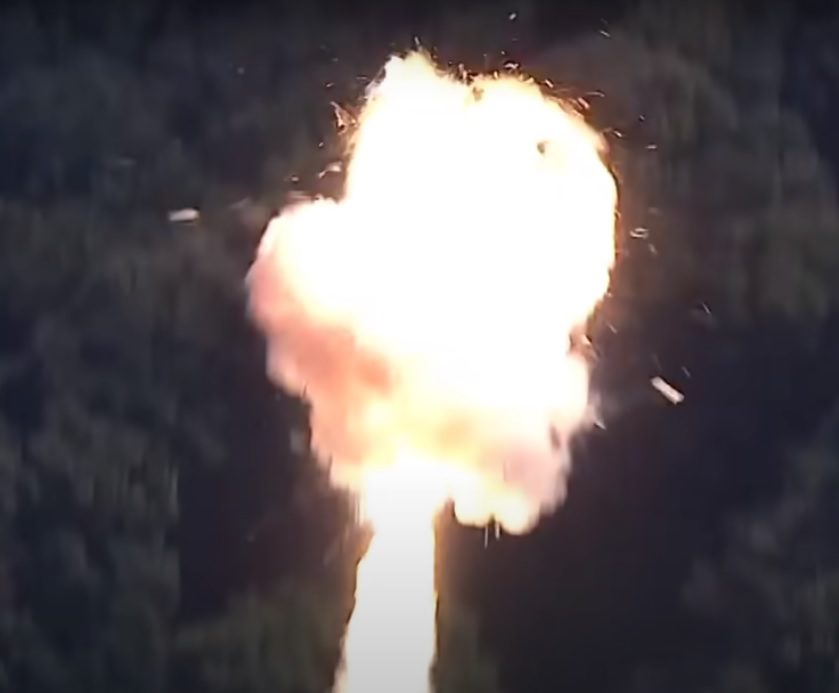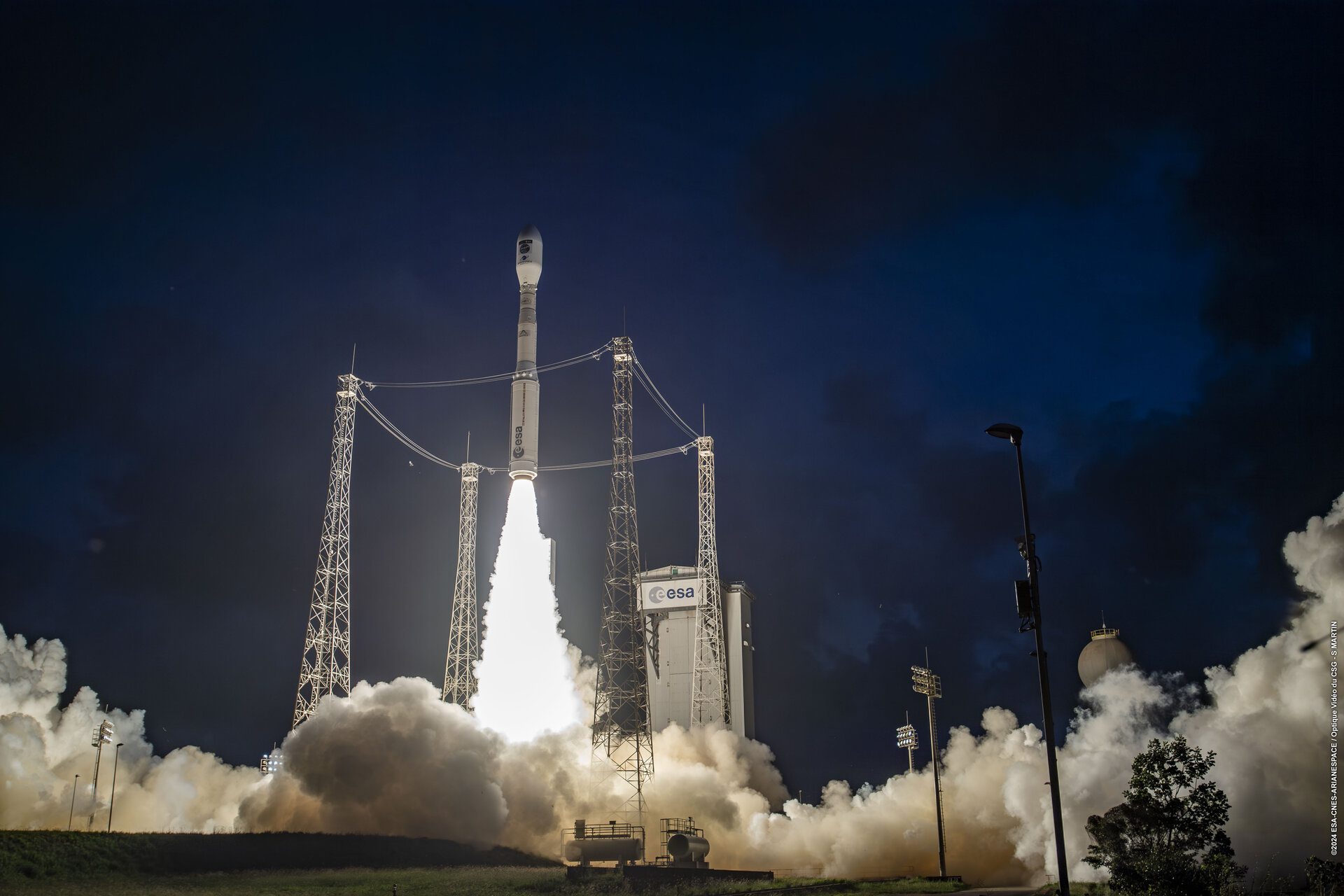While SpaceX had a major exhibition stand at the IAC 2015, the firm was strangely quiet in not having many presentations at the congress. Nevertheless, it remains the “elephant in the room” via its low prices and attempts to perfect a reusable landing stage. Even the French Space Agency, CNES, is now undertaking serious studies into what a reusable launch vehicle should look like.
Chistophe Bonnal of CNES presented a very interesting paper (IAC-2015.D2.5.1) on the benefits and downsides of the different reusable launch and landing techniques possible for vertically launched rockets. The techniques had a variety of strange and amusing names including the “Dead Leaf and Glide” and the “Pseudo-Ballistic Impact”.
There was a general acceptance at the conference that reusable rockets will eventually become economic. Robert Hauser, of the United Launch Alliance, said: “It is not a question of if… it is a when?” Nevertheless, some doubted whether the current state of technology would allow for its economic operation. Lin Shen, Deputy Chief Researcher of China Academy of Launch Vehicle Technology (CALT), asked: “How much will SpaceX pay for its reusability?”
For the time being Arianespace thinks that with its planned new expendable Ariane 6, it will have a competitive rocket in its fight against the Falcon 9, whether this SpaceX’s offering is partially reusable or not. When it comes to what happens after Ariane 6, of course, the ESA has supported research into air-breathing rocket technology for Reaction Engines’ Skylon single-stage-to-orbit rocket plane design. When asked if the Skylon spaceplane would become an ESA launcher, Johann-Dietrich (Jan) Woerner, Director General of ESA, replied in both a positive and non-committal way: “I have visited Skylon. I have visited also a test there. Impressive! Impressive! Impressive! Let’s see.”
While ESA and CNES are aware of Skylon as a potential contender in the reusable arena, the new head of Arianespace, Stephane Israel, said he had not heard of Reaction Engines or the Skylon concept. He mentioned that his organisation was considering developing a microlauncher with a payload capability of 50-300kg.
On a similar tack, Isaac Ben-Israel, Chairman of the Israel Space Agency, confirmed that Israel was gain looking at air-launched rocket solutions to lift payloads of up to 100kg into LEO. He had previously described the political and safety difficulties in making eastward flights (in the direction of the Earth’s spin boost) from Israel (their Shavit launchers have to fly westwards severely limiting their performance).
Virgin Galactic put a bit more flesh on the bones of its decision to upsize its air-launched LauncherOne concept in IAC-2015.D2.7-2.
According to the firm’s Sirisha Bandla, the enlarged Liquid Oxygen (LOx)/RP1-grade kerosene rocket launch vehicle will now have to be carried by a commercial airliner with the rocket wing mounted. The speculation is that the aircraft will be an ex-Virgin Galactic Boeing 747. An extra engine pod can be carried on a 747 to ferry a spare jet engine between stations and a LauncherOne rocket could be similarly located. However, it is more likely, for mass reasons, that the 25,000kg launch vehicle will replace one of the four jet engines altogether. If this is the case, then the Boeing 747 would only have three engines to take off with and so would probably need a very long runway. The two-stage all composite launch vehicle will subsequently be airdropped from the aircraft at an altitude of 35,000 feet and then accelerate to orbital velocity. Virgin Galactic’s orbital operation is based at the firm’s Long Beach facility, although launch operations are likely to take place from the Mojave Desert.
Another small launch vehicle likely to come into operation is the Firefly Alpha, which has a projected first flight in 2017 and a launch price of only US$5 million. Andy Bradford, representing the Firefly firm, noted that the rocket, which will initially use LOx/kerosene engine technology on its two stages, will be able carry 500kg to LEO and has already been awarded a contract by NASA to carry cubesats on a dedicated launch. The rocket uses an unusual plug-cluster aerospike engine arrangement on its first stage.
One time NASA Ares rocket project-guru, Doug Cook of Dynetics (IAC 2015.D.2.7-2), has moved to a launch vehicle on a much smaller scale as he described his firm’s plans for a small three-stage 15.85m launch vehicle (a combined five core first stage), which would be carried inside the container of a six-wheeler lorry. The rocket and container would be erected vertically for launch, with blow-out panels designed into the launch container to reduce noise/vibration. The engines would use liquid injection thrust vector control.
Each core of the first stage would have three of the 3,000 lb (13.5 kN) thrust ablatively cooled engines. The second stage would again have three core 3,300lb engines, while the final stage would have a single 1,000lb (4.5 kN) thrust H202/Kerosene engine. The rocket is projected to carry 40kg to LEO or 19kg to a Sun-synchronous orbit, at a price of circa US$2 million per flight. Cost is the driving factor in the engineering for the design. When asked why the firm was using stainless steel tankage over lighter types, his single-word reply was “Cheaper”. The firm estimates that it needs US$40 million to complete the vehicle.
The Bloostar concept IAC-2015.D.2.7.8 was formally announced at the IAC. This uses a three-stage orbital vehicle carried into the air by a balloon similar to the old Rockoon studies. The Zero2Infinity firm building the system plans to use six pressure-fed LOx/Liquid Methane burning regenerative cooled engines on each of the first two stages, with a final single engine on the final stage. All tankage would use common bulkheads allowed by the closeness of LOx and liquid methane temperatures. The Bloostar system would be launched from a boat/ship on the leaward side of the Canary Islands where high ground provides a natural wind break.
The boat/ship itself would match any wind velocity before launch to allow a stable initial release. The rocket is projected to carry up to 150kg to LEO and should be capable of carrying 80kg into a Sun-synchronous orbit. The short stubby rocket system was cited as having better controllability while, at the same time, providing 2m-diameter payload accommodation under the Teflon coated fibre-glass fairing. While twisting of the launch vehicle would be an issue in balloon release, the rocket would use 2D-gimballing combined with differential throttling to provide control authority.
The balloon would carry instruments to provide a communications relay. The firm plans to make an initial orbital trial launch in 2018 and estimates that it will be able to launch payloads for US$4 million per launch. The development of the rocket engines is reportedly under way.
Haoliang Yang, of the Beijing Institute of Astronautical Systems Engineering (IAC-2015.B4.5.5), described China’s plans to get around part of the ITAR ban on US technology being flown on rockets launched from Chinese territory. It is designing a small launcher called Naga-L, which can be launched from sites outside China.
The two-stage launch vehicle would use LOx/kerosene propellant technology for the first stage and LOx/liquid hydrogen technology, developed for the Long March 5/6/7 family, for the second stage. It would be able to launch an 820kg payload into a sun-synchronous orbit for less than US$10 million.
The firm plans to launch from Indonesia, Tanzania and possibly Sweden if the overflight of Norweigian air space can be negotiated. Whether US authorities will allow their satellites or satellite technology to be flown on a Naga-L in this way remains to be seen.
Note: The writer of this piece is an investor in Reaction Engines Limited






